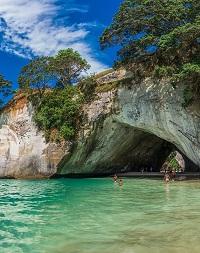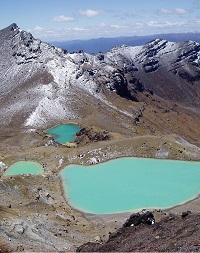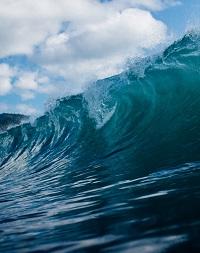Educational Trip To New Zealand North Island For International Schools
New Zealand is a unique choice for your next school trip! Explore the vast national parks offering the best outdoor classroom to study an exceptional topography which houses a distinct biodiversity. Learning about the Maori cultural is essential to any trip to New Zealand, experience their way of life in a local village to see homemade arts & crafts and traditional entertainment to complete your trip of a life time.
Highlights
Geography
Cultural
History
School from Hong Kong Travelling to the USAA successful, thoroughly enjoyable and well organised trip.
What's included
Subject based excursions
The Coromandel Peninsula was named for HMS Coromandel, a ship of the British Royal Navy, which stopped at Coromandel Harbour in 1820 to purchase kauri spars and was itself named for India’s Coromandel Coast. The peninsula is steep and hilly the Coromandel mountains rising to nearly 900 metres, and is largely covered in subtropical rain forest.
New Zealand’s oldest tourist resort, Rotorua’s geothermal features spread through and around the city, including geysers, mud pools and hot springs. In the 1800s visitors travelled around the world to see the famous pink and white terraces, unfortunately destroyed by Mount Tarawera volcano in 1886. The city, at the heart of Maori culture, is still a thermal resort and boasts a great range of adventure and cultural activities.
- Chemical testing of hot springs
- Take a cable car ride for fantastic views and two luge rides.
- See geysers, mud pools and kiwi birds at Te Puia.
- Enjoy a Maori concert and demonstration of traditional Maori arts and crafts (wood, bone and jade carving, weaving of New Zealand flax)
- Explore Tamaki, a Maori village
Tauranga is New Zealand’s fastest growing city after Auckland and a favourite summer holiday destination for kiwis, with its large natural harbour and extensive white sandy beaches. It’s also New Zealand’s largest export port and a regular stop for both container ships and luxury cruise liners. Tauranga was settled by Māori late in the 13th century and by Europeans early in the 19th, it is now a centre for business and international trade, culture, fashion and horticultural science. A wide range of fresh produce, including kiwifruit and avocados is grown in the area due to the mild, sunny climate and volcanic soil.
- Visit historic gold-mining area – walk through tunnels and scenic gorge.
- Join a community service project (eg. dune planting at Waihi Beach including coasts or mud flats study)
- Hot soak/swim in hot salt-water pools
Tongariro National Park is noted for its volcanic and geothermal activity and cultural and recreational value. Tongariro was New Zealand’s first national park, created following a gifting of the sacred central North Island peaks to the nation in 1887 by Paramount Chief Te Heuheu Tukino IV (Horonuku). The park has been added to the World Heritage List.
- Explore the scenic Huka Falls
- Visit the Whakapapa Visitor Centre exhibition on park geology and ecology
- See one of Lord of the Rings’ film location (Whakapapa ski field)
- Hike the Silica Rapids (depending on the weather)
Waitomo caves are noted for their stunning stalactite and stalagmite displays, and for their glowworms (the fungus gnat Arachnocampa luminosa). The word Waitomo comes from the Māori language wai meaning ‘water’ and tomo meaning a ‘sinkhole’. These caves are believed to be over two million years old and have been the centre of increasingly popular commercial caving tourism since 1900.
- Visit the famous glow worm caves
- Explore Pirongia Forest Park and study the stream(time permitting)
- Visit an organic dairy farm
- Fish and chips on the beach – a typical kiwi meal
In Raglan you can catch a wave or sip a great espresso. This lively surf town has an interesting creative culture and a wonderful choice of cafés. Raglan was named after ’Lord Raglan’ after it was used as a base during Land Wars in the 1860s. The town’s known history goes back as far as 1000 years when the Tainui waka of the local Maori people first landed here during the Great Migration. Legend has it that they saw nearby Mt Karioi in the distance and after what seemed an age finally got there. They named this area Whaingaroa meaning ’the long pursuit’






